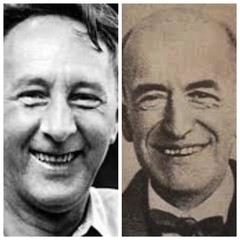|
Back
Champagne Concertos New York
92nd Steet Y, Theresa L. Kaufmann Concert Hall
05/08/2019 -
Wolfgang Amadeus Mozart: Wind Quintet in E-flat Major, K. 452 (arranged by Jean Françaix as Nonetto
Manuel de Falla: Concerto for Harpsichord, Piano, Oboe, Clarinet, Violin and Cello
Bohuslav Martinů: Concerto for Harpsic0rd ad Small Orchestra, H. 246
Richard Strauss: Till Eulenspiegels lustige Streiche, Op. 28 (arranged for eight instruments by Brett Dean)
Mahan Esfahani (Harpsichord)
Orpheus Chamber Orchestra: Elizabeth Mann (Flute/Piccolo), Stephen Taylor (Oboe), Alan Kay (Clarinet), Frank Morelli (Bassoon), Stewart Rose (Horn), Todd Philips, Miho Saegusa, Eric Wyrick (Violins), Mardo Poy (Viola), Jonathan Spitz (Cello), Lizzie Burns (Double bass), Steven Beck (Piano)

Orpheus strings and M. Esfahani at 92St Y (© Samuel A. Dog)
“I shall always feel grateful to any who, by the exercise of infinite art supported by fine taste, contrives to render the harpsichord capable of expression.”
François Couperin (1688-1733), Preface to Pièces de Clavecin, Book I
Mea culpa! Whenever hearing the Orpheus ensemble, I’m tempted to write, “Such fabulous musicians! Imagine how much better they’d be with a conductor.” Which is as unfair as saying, “Hey, we free-will humans are surviving okay! Imagine how much better we’d be with a God determining what we can do.”
Last night, hypotheses were un-necessary. Less than a dozen Orpheus players showed their incandescent individual stuff in a frothy, almost bubbly concert. A few ghostly measures were heard in the de Falla Concerto for harpsichord. But they only heightened four pieces (or three-and-a-half pieces) which exhaled inspirational exuberance over three centuries.
That three-and-a-half referred to a less than ideal rendition of Richard Strauss’s Till Eulenspiegels lustige Streiche for nine players, courtesy of Australian composer Brett Dean. The most sparkling notes came from the original solos of clarinet and horn, played with daring brilliance by Alan Kay and Stewart Rose. Otherwise this was a clever tour de farce which did as well as could be.
The Strauss work depends on individual “characters” opposed to a whirlwind world of orchestral masses and great climaxes. One was happy to hear such transparency in the lighter sections, yet the omissions of the huge crescendos as before the execution, were less than satisfactory (albeit with a terrific double bass imitating the snare drum).
Far more interesting was an arrangement of Mozart’s late Quintet for Piano and Winds, with four strings taking the place of the keyboard. In this case, it was that musical trapeze artist, Jean Françaix, whose chamber music–even his elegant orchestrations of Chopin–are flawless in the best Gallic style.
The five wind players were at their technical best, since Mozart knew exactly of what he was writing, and Françaix, as far as I could hear, replicated Mozart’s notes. The strings were the challenges, and the transposition from keyboard seemed flawless. Most startling of all were the two violinists working their counterpoint, these runs in piano-like thirds, with such clarity that one wondered why Mozart didn’t use them in the first place.
Perhaps because Mozart already wrote to his dad, “I consider this Quintet to be the best thing I have ever written in my life.” After the “Haffner”? Okay, Mozart’s taste was infallible. And the Orpheus Chamber Musicians made certain that it was given the zest, the sureness, the apparent bucolic spirit in which it was written.

B. Martinů/M. de Falla
Still, doubtless many in the audience came to hear that iconic harpsichordist Mahan Esfahani perform and talk (the Iranian-born artist is a most voluble speaker) and turn the ivory-tones of the 18th Century instrument into 20th Century gold.
I expected this with Manuel de Falla’s elegant homage to one of his prime supporters, Wanda Landowska, but was overwhelmed by Mr. Esfahani’s second work, Martinů’s concerto.
This was the first time I heard the de Falla Concerto live, and noted how the Orpheus almost hid the keyboard amongst the other instruments. De Falla had wanted the harpsichord to be placed in the front, the other instruments behind. Here, Mr. Esfahani’s harpsichord was placed in the middle of the group, so he didn’t offer that fundamental sound needed here. Still, his work was stunning. Not 18th Century trills and mordants, but grand arpeggios, which are almost Baroque, give or take some unexpected dissonances.
It is the second movement marked giubiloso et enegico (with jubilation and energy), where de Falla wished to resemble a procession in a Gothic Cathedral. It is so eerie, so strange, and this group gave it the idiosyncratic impetus to make the most remarkable music of the evening.
Though, truth be told, when the harpsichord was moved to center stage, when we could see him pushing all the stops and watch his fingers running through both keyboards in the Martinů Concerto, one realized what a marvelous performer he is.
If this work isn’t familiar, blame it on Martinů’s fecundity. De Falla was an ascetic composer, Martinů’s genius overran him. Like Milhaud and Telemann, he never stopped writing.
This Concerto was a wonder for Mr. Esfahani. Whether playing cadenzas, working with the small ensemble, or chiming in with the piano in strange sonorities, the piece was delightful.
Like the entire program, he was light, fluid, he gave color to what Couperin (in the quote above) had felt was the instruments deficiency. Mr. Esfahani’s own sparkling playing was immediately and infectiously a thing of joy.
Harry Rolnick
|